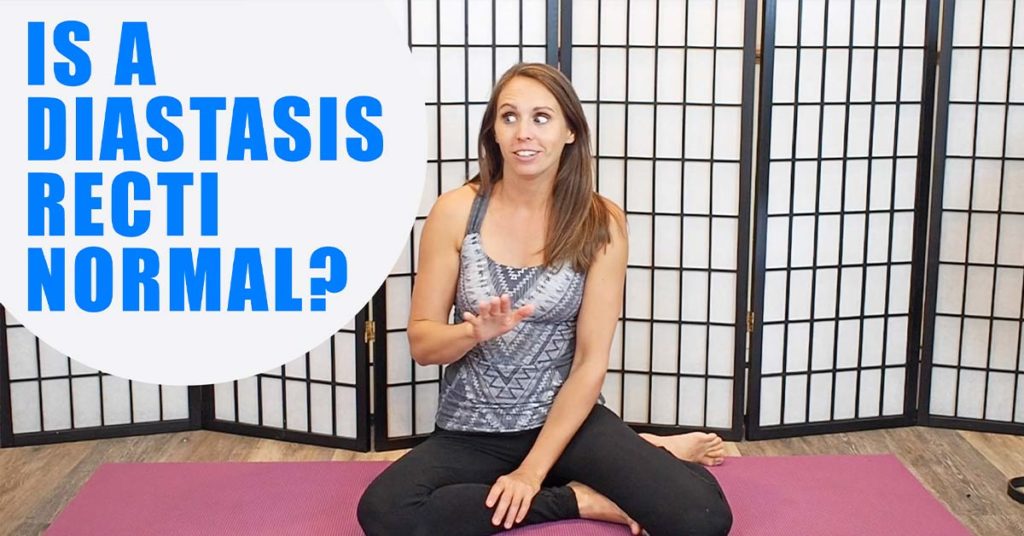Yes!!! A diastasis recti is a normal part of development in kids and also during pregnancy to allow room for the baby to grow. It’s actually pretty amazing what the body is capable of!!
Let’s start with development. Almost all small humans have a diastasis recti (DR). Usually it naturally goes away as they get stronger. We trade in some of that incredible flexibility for strength. Most parents never need to think or worry about their kid’s DR but should just encourage them to stay active. Crawling, climbing, jumping, and other normal kid movements will develop the strength needed to firm up the DR.
What if it doesn’t? What if you have an 8 or 10 yr old and you still see bulging when they try to get off the floor? In this case I think it’s worth a session with a specialized physical therapist to learn some exercise ideas. It might be a matter of adding in breathing drills and some more challenging exercises to get that muscular response that we’re looking for.
I’ve seen plenty of adults with a DR, both men and women who have never had children. 100% of the people I’ve seen with it needed to work on both how they load their muscles (it’s not always a measure of pure strength, but of how the muscles work together) and how they breathe. I’ve actually had a few semi-pro athletes with a DR who were very strong. We just needed to balance things out.
With pregnant and postpartum women, you have the obvious stretching of the midline fascia that usually leads to a DR by the time of delivery. Some women heal faster than others and my passion has been in figuring out why?? According to research, it’s not belly size, baby weight or weight gain, even though this is really hard to believe and seems like the obvious cause.
I’ve seen too many women who didn’t gain a lot of weight and delivered prematurely but still had a lingering DR to help lead me to the conclusion that it’s more about how we move our bodies than just chance. Which can be great news for rehabbing after delivery!
We have seen some interesting results from women who had worked with me to rehab their DR after a pregnancy and then went on to get pregnant again. Over the course of several recurrent pregnancies, we were able to put this theory to the test. In the women who have gotten pregnant again after going through the biomechanical changes I recommended, their diastasis was not as severe postpartum and healed faster than in their previous pregnancies. Professionalism aside… this is so cool!!!!
It means there might actually be something we can do for prevention! Now, I didn’t set this up in a professional study format and didn’t publish it, but I do have the clinical experience and case study knowledge from seeing it happen. Does that mean it can be repeated every time…? Time will tell. I don’t plan to stop working with women any time soon, so I imagine treatment methods and findings will just keep on improving.
The biggest issue I see is that it’s not always simple advice. It’s rarely ever “do this exercise” or series of exercises. It has more to do with HOW you do things than what you do, how the muscles work together and how they load, which can be a lot more difficult to teach and comprehend and apply. It requires a lot of dedication and effort for learning and troubleshooting. When you pair this with the sleep deprivation that comes along with a new small human, it can be understandably challenging to get quick results!
Try This Free Diastasis Recti Educational Series
Dr. Sarah Duvall, PT, DPT, CPT, and the CES Team have helped thousands of women create the strength and stability needed to overcome diastasis recti and build core strength.
Join us today for this 4-part Diastasis Recti Video Series, absolutely free.
We don't spam or give your information to any third parties. View our Terms of Use and Privacy Policy.

